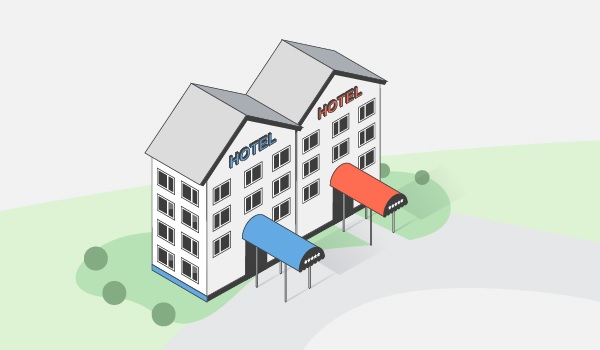
Hotel dual-branding came on the scene about a decade ago, but it’s still a fairly new concept. New Castle Hotels & Resorts was one of the first companies to dive into the dual-brand hotel model. They saw it as a win-win—dual-branding held enormous benefits and minimal disadvantages. You double up hotel offerings on a single property, double-down on the outside competition, and combine operating staff. How does dual branding work, and is this just a trend or a permanent fixture in the industry?
How does it work?
When you have one property appealing to two sets of different demographics, it’s a best-case scenario for receiving a return on your investment. The Hilton Garden Inn/Homewood Suites property is a perfect example of one property appealing to different segments. Homewood’s extended-stay model attracts contract and corporate group business, while HGI draws in the temporary and leisure guests. During the week, the business traveler drives the majority of the demand. On the weekends, temporary and leisure guests fill the vacant rooms.
However, if one brand sees more demand than the other, guests may be pushed into a different lodging choice than they expected. And make no mistake about it, some guests are very loyal to their hotel brands. If a guest is a fan of the Hyatt brand, they want to walk into the hotel lobby and see the signature branding of that property. If the dual brand morphs into one property, it can feel like staying in a different hotel.
Then there’s separating out the free-based versus fee-based amenities from the two different brands. For example, free breakfast. A few brands of Marriott Hotels offer free breakfast, while others have a fee-based option. In order to keep the fee-based guests from taking advantage of the free breakfast, there needs to be a separation on the property. There are different types of solutions, but Marriott encourages the design of the properties to offer breakfast on different floors or sections of the hotel.
The appeal of dual branding
With inflation costs at a 40-year high, the cost of new construction has increased. There’s also a lack of available, affordable land. Dual branding appeals to both developers and hotel operators because it provides a greater cash flow than a single-sourced hotel. It also ties up the market, putting single-sourced hotels at a disadvantage from an income perspective. Dual-brand hotels offer the opportunity to drive revenues in ways single-branded hotels can’t.
The biggest cost savings come from a reduced labor force and shared back-of-house operations. On the management side, you only need one general manager instead of two, one executive housekeeper instead of two, and so on. The two brands can share big amenities like pools, fitness centers and housekeeping, which can save on staff to work those areas. Sales and marketing can also be combined for maximum efficiency.
Where does dual branding stand now?
Currently, there are more than 40 multi-brand properties already open around the country, 25 under construction, and another 50 in the planning stages, according to Hank Jones, a principal with Kallenberger Jones & Co., a hotel investment consulting firm.
There have been a number of dual-brand properties announced or launched in recent months. Marriott, which operates 44 hotels in 22 dual-brand properties and has more than twice that number of hotels in planning or under construction. Last year, Wyndham announced the first groundbreaking of its new La Quinta and Hawthorn Suites dual-brand hotel concept in Pflugerville, Texas.
A 2016 HVS report looking at the trend of dual branding concludes, “The dual‐brand hotel concept is here to stay and is likely to grow further as investors become more acquainted with it. However, hotel companies with more brands in the mid‐ and full‐service segments are arguably better placed to operate such a concept, as opposed to companies with a concentration of brands in the upscale segment.”
The HSV report predicts that dual branding will continue to make a footprint in the United States before eventually moving the concept overseas.
Recent Posts
-

Booking Choice Hotels with CLC Lodging
Nov 11, 2024 | -

Hotel Spotlight with BWH Hotels
Oct 10, 2024 | -

CLC Lodging Introduces Group Reservations to Simplify Project and Long-Term Lodging Needs
Jul 22, 2024 |